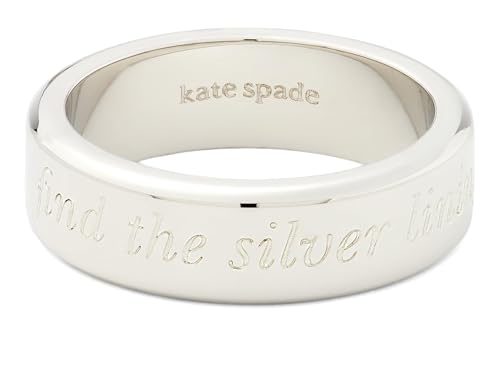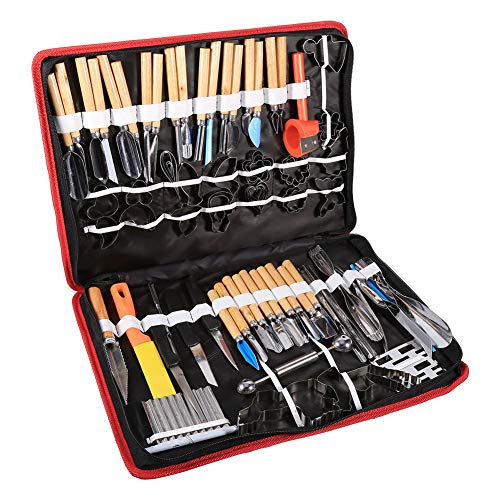
If you own a Cutco hunting knife, you already know the importance of keeping it sharp. A sharp knife is not only necessary for efficient and effective cutting, but it is also safer to use. A dull knife requires more force to cut through materials, increasing the risk of accidents and injuries. That’s why it’s crucial to know how to properly sharpen your Cutco hunting knife.
Sharpening your Cutco hunting knife may seem like a complicated task, but with the right tools and technique, it can be easily accomplished. Regular maintenance and sharpening will not only extend the life of your knife but also ensure that it performs at its best when you need it most.
There are several methods and tools you can use to sharpen a Cutco hunting knife, but one of the most popular and effective methods is using a whetstone. A whetstone is a rectangular block of abrasive material, typically made of natural stone or synthetic materials. It allows you to control the angle and pressure while sharpening your knife, resulting in a razor-sharp edge.
To start sharpening your Cutco hunting knife with a whetstone, follow these step-by-step instructions:
- Soak the whetstone in water for about 10 minutes to ensure it is fully saturated. This will help lubricate the surface and prevent it from getting clogged with metal particles.
- Hold the whetstone firmly on a flat surface. Some whetstones come with a non-slip base, but if yours doesn’t, you can use a damp towel or a rubber mat to prevent it from sliding.
- Hold the knife at a 15-20 degree angle against the whetstone, with the edge of the blade facing away from you. It’s important to maintain a consistent angle throughout the sharpening process for the best results.
- Using moderate pressure, swipe the blade along the whetstone, starting from the base and moving towards the tip in one smooth motion. Repeat this motion on both sides of the blade for about 10-15 times, or until you achieve the desired sharpness.
- Rinse the knife with water to remove any metal particles that may be left on the blade. Dry it thoroughly with a clean towel.
- Check the sharpness of your knife by gently testing it on a piece of paper or fabric. If it cuts effortlessly and cleanly, you have successfully sharpened your Cutco hunting knife.
Remember to regularly maintain and sharpen your Cutco hunting knife to ensure optimal performance and longevity. With proper care and sharpening, your Cutco knife will continue to be a reliable companion on all your hunting adventures.
Choosing the Right Sharpening Tools
When it comes to sharpening your Cutco hunting knife, using the right tools is crucial to maintaining its sharpness and longevity. There are several options available for sharpening tools, each with its own advantages and disadvantages. Here are some factors to consider when choosing the right sharpening tools for your needs:
1. Sharpening stones: Sharpening stones are a traditional and versatile option for knife sharpening. They come in various types, such as natural oil stones, water stones, and diamond stones. Natural oil stones are great for general sharpening, while water stones are preferred for finer sharpening. Diamond stones are known for their durability and ability to remove material quickly. Consider the type of stone that best suits your preferences and the level of sharpening required.
2. Honing rods: Honing rods, also known as sharpening steels, are long, cylindrical rods made from a hard material. They are used to realign the blade’s edge and maintain its sharpness between sharpening sessions. Honing rods are ideal for quick touch-ups and help prolong the time between sharpenings. Look for a honing rod that matches the hardness of your knife’s steel to achieve optimal results.
3. Electric sharpeners: Electric sharpeners offer convenience and speed, making them a popular choice for many knife owners. They typically feature motorized multi-stage sharpening processes, including coarse and fine grits. However, be cautious when using electric sharpeners, as they can remove more material than necessary if not used correctly. It’s essential to follow the manufacturer’s instructions to avoid damaging your knife.
4. Guided sharpening systems: Guided sharpening systems are designed to provide precise and consistent sharpening results. These systems use a base or clamp to hold the knife at a specific angle while the user moves it across a sharpening surface. Guided sharpening systems are suitable for both experienced and novice sharpeners, as they simplify the process and reduce the risk of errors.
5. Professional sharpening services: If you’re not comfortable sharpening your Cutco hunting knife yourself or you prefer a professional touch, you can opt for professional sharpening services. These services have the expertise and specialized tools to ensure your knife is sharpened correctly. Keep in mind that this option may involve additional costs and may require you to send your knife away for sharpening.
Ultimately, the right sharpening tool for your Cutco hunting knife will depend on your personal preferences, experience level, and the level of sharpening your knife requires. Consider the pros and cons of each option before making your decision. Whichever tool you choose, always prioritize safety and follow proper sharpening techniques to maintain the quality and sharpness of your knife.
Understanding the Different Grit Levels
When it comes to sharpening a Cutco hunting knife, understanding the different grit levels is essential. Grit refers to the coarseness of the sharpening stone, and each level has its own specific purpose and use.
The grit levels typically range from coarse to fine, with higher numbers indicating a finer grit. Below is a table outlining the different grit levels and their recommended uses:
| Grit Level | Description | Recommended Use |
|---|---|---|
| Coarse (80-120) | This is the lowest grit level and is used to quickly remove a dull edge or repair major damage to the blade. | Initial sharpening, reprofiling, or repairing damaged blades. |
| Medium (200-800) | This grit level is ideal for refining the edge after using a coarse stone and helps to remove any remaining scratches or nicks. | Refining the edge and removing scratches or nicks. |
| Fine (1000-3000) | A fine grit stone is used for sharpening blades that are already in relatively good condition but require a sharper edge. | Sharpening blades that are in good condition but need a finer edge. |
| Extra Fine (4000+) | This is the highest grit level and is used for achieving an extremely polished and razor-sharp edge. | Precision sharpening for a polished and razor-sharp edge. |
It’s important to note that different types of blades may require different grit levels for optimal sharpening results. When sharpening your Cutco hunting knife, start with a coarser grit and gradually work your way up to finer grits for the best outcome.
Selecting a Suitable Sharpening Stone
When it comes to sharpening your Cutco hunting knife, selecting the right sharpening stone is crucial. The quality and type of stone will greatly affect the outcome of your sharpening process. Here are some factors to consider when choosing a suitable sharpening stone:
- Grit: Sharpening stones come in a variety of grit levels, ranging from coarse to fine. Coarser stones with lower grits are ideal for repairing and reshaping the blade, while finer stones with higher grits are used for polishing and refining the edge. It is recommended to start with a coarse grit stone and gradually move to finer grits for optimal results.
- Material: Sharpening stones can be made of different materials, such as natural stones, synthetic stones, or diamond stones. Natural stones, like Arkansas stones, are known for their exceptional finishing qualities. Synthetic stones, like aluminum oxide or silicon carbide, are more affordable and offer consistent results. Diamond stones, on the other hand, are extremely durable and provide fast sharpening.
- Type of Knife: Consider the type of knife you are sharpening. Different knives have different hardness levels and blade angles. For example, a pocket knife may require a softer stone to avoid damaging the blade, while a hunting knife with a harder steel may require a harder stone for effective sharpening. It is essential to match the stone hardness to the knife’s steel hardness for best results.
- Size and Shape: The size and shape of the sharpening stone can impact the sharpening process. If you are sharpening a larger hunting knife, a longer and wider stone may be more suitable. A smaller stone, on the other hand, may be more convenient for smaller blades or for on-the-go sharpening.
By taking these factors into account, you can choose a suitable sharpening stone that will ensure your Cutco hunting knife is razor-sharp and ready for any outdoor adventure.
Preparing Your Cutco Hunting Knife
Before you start sharpening your Cutco hunting knife, it’s important to properly prepare it. This will ensure that you achieve the best results and prolong the life of your knife.
Clean the Knife
Begin by cleaning your knife to remove any dirt, debris, or grime that may be present. Use warm soapy water and a soft cloth to gently wipe down the blade and handle. Rinse thoroughly and dry completely before moving on to the next step.
Inspect for Damage
Next, carefully inspect your knife for any signs of damage. Look for chips, nicks, or bent edges that may affect the performance or safety of the knife. If you notice any damage, it’s best to get it repaired by a professional before attempting to sharpen it.
Note: Sharpening a damaged knife can further exacerbate the problem and potentially cause injury.
Once you have ensured the knife is clean and damage-free, you can proceed with sharpening it to keep it in optimal condition for your hunting adventures.
Remember, proper preparation is key to achieving a sharp and safe Cutco hunting knife.
Ensuring the Blade is Clean and Dry
Before sharpening your Cutco hunting knife, it is essential to ensure that the blade is clean and dry. This will help prevent any dirt or debris from interfering with the sharpening process and ensure a smooth and effective result.
To clean the blade, use a damp cloth or sponge to wipe away any dirt, rust, or stains. Make sure to remove any excess moisture by thoroughly drying the blade with a clean cloth or towel.
It is important to note that using water or other liquids to clean the blade is not recommended, as it can lead to rust or damage if not thoroughly dried. If your blade has any stubborn stains or residue, you can use a mild solution of dish soap and water, but again, ensure that the blade is completely dry before proceeding with the sharpening process.
Once the blade is clean and dry, you are ready to proceed with sharpening your Cutco hunting knife and restoring its sharpness for optimal performance in the field.






